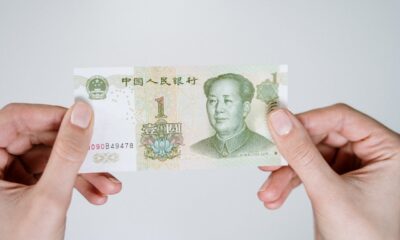Markets
China’s Auto Industry Races Toward Global Dominance
China’s auto industry, already the world’s top exporter, targets 40 million annual sales within five years, with a quarter for export. Growth stems from rural demand, global south expansion, electrification, and state-backed innovation. With EVs surpassing 40% of sales, China is shifting from factory to global automotive leader, challenging Western and Japanese dominance.

China’s automotive industry is preparing for a quantum leap. Building on its status as the world’s leading exporter, it aims to exceed 40 million vehicles sold annually within five years, with nearly a quarter of these destined for export. These projections, which may seem bold, are nevertheless based on a multifaceted growth strategy, combining internal dynamism and the conquest of international markets.
The rise of the China’s auto industry is anything but a fluke. By selling 31.4 million vehicles in 2024, China has solidified its position as the undisputed leader, surpassing its historical rivals. But while the road traveled is already immense, the growth prospects are far from exhausted.
The potential for development in the domestic market, particularly in rural and central-western regions, is still enormous. These areas, which are less motorized than major cities, represent a huge reservoir of growth for local manufacturers. On the international stage, China’s strategy is now turning toward the “Global South.”
Emerging markets represent a major opportunity. Chinese manufacturers, once perceived as outsiders, have become more competitive, both technologically and cost-wise. They are now able to compete directly with Western and Japanese brands, thus disrupting the established order.
Electrification and innovation, pillars of China’s auto industry future
This rapid expansion of China’s auto industry is based on a profound transformation of the sector. Electrification is at the heart of this revolution. By 2024, electric vehicles (EVs) already accounted for more than 40% of sales.
This figure reflects a proactive policy that has made EVs the spearhead of its industrial strategy. Beyond the environmental advantage, the short lifespan of EVs—estimated at ten years compared to eighteen for combustion-engine models—is accelerating the renewal of the vehicle fleet, creating a constant demand cycle.
State support as a catalyst
The Chinese government is playing a proactive role in this dynamic. Through targeted industrial policies, it supports the sector, seeking both to avoid excessive competition and to stimulate innovation. Massive investments in research and development of cutting-edge technologies such as solid-state batteries, semiconductors, and embedded systems reflect this desire to establish itself as a technological leader.
The trajectory of China’s automotive industry is clear: from the world’s factory, it is on its way to becoming the nerve center of innovation and production.
This paradigm shift is a boon for China’s economy, which now relies on this sector as one of its main pillars. But it also sends a strong signal to the entire global automotive industry, which will have to deal with this new dominant player. The competition is on, and it promises to be fiercer than ever.
__
(Featured image by Carles Rabada via Unsplash)
DISCLAIMER: This article was written by a third party contributor and does not reflect the opinion of Born2Invest, its management, staff or its associates. Please review our disclaimer for more information.
This article may include forward-looking statements. These forward-looking statements generally are identified by the words “believe,” “project,” “estimate,” “become,” “plan,” “will,” and similar expressions. These forward-looking statements involve known and unknown risks as well as uncertainties, including those discussed in the following cautionary statements and elsewhere in this article and on this site. Although the Company may believe that its expectations are based on reasonable assumptions, the actual results that the Company may achieve may differ materially from any forward-looking statements, which reflect the opinions of the management of the Company only as of the date hereof. Additionally, please make sure to read these important disclosures.
First published in LES ECO.ma. A third-party contributor translated and adapted the article from the original. In case of discrepancy, the original will prevail.
Although we made reasonable efforts to provide accurate translations, some parts may be incorrect. Born2Invest assumes no responsibility for errors, omissions or ambiguities in the translations provided on this website. Any person or entity relying on translated content does so at their own risk. Born2Invest is not responsible for losses caused by such reliance on the accuracy or reliability of translated information. If you wish to report an error or inaccuracy in the translation, we encourage you to contact us.

-

 Fintech7 days ago
Fintech7 days agoN26 Hires UBS Executive to Lead Turnaround Amid Regulatory Pressure
-

 Crowdfunding2 weeks ago
Crowdfunding2 weeks agoDigital Finance Fosters Inclusivity: Women and Minorities Lead in Italian Equity Crowdfunding
-

 Biotech2 days ago
Biotech2 days agoCAR-T Therapies: From Breakthrough Cancer Treatment to Faster, Safer, and More Accessible Immunotherapy
-

 Cannabis1 week ago
Cannabis1 week agoLuxembourg’s Cannabis Paradox: Legal at Home, Restricted Everywhere Else
























